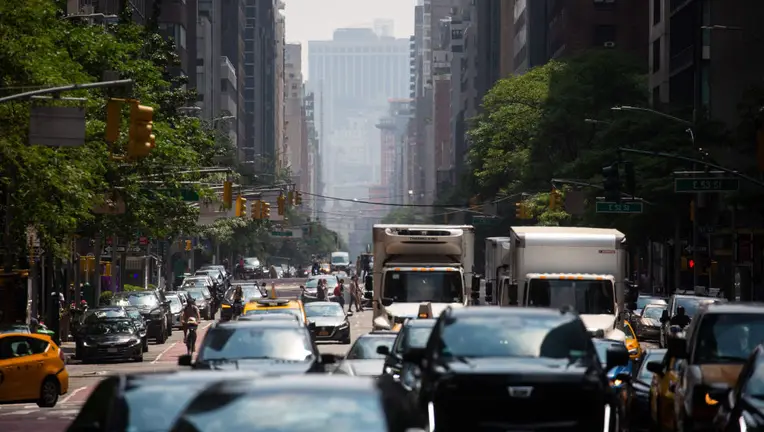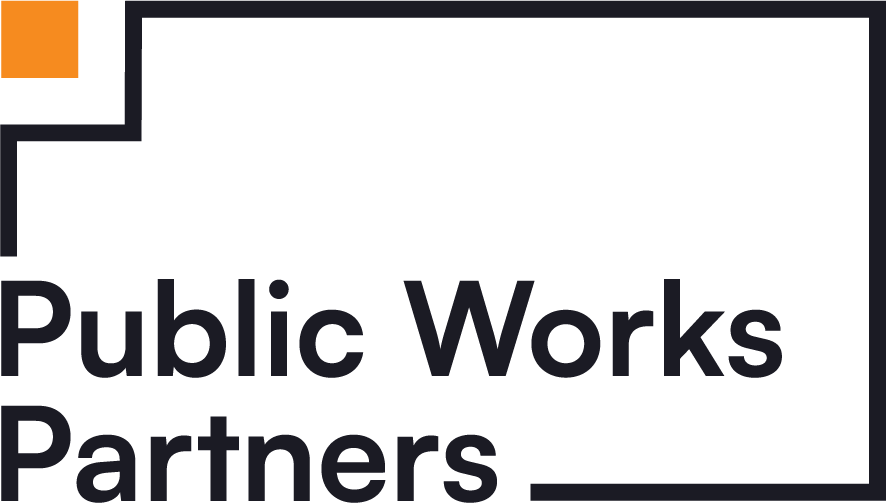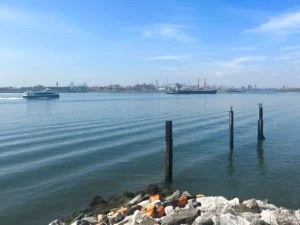
Great news for New Yorkers! The highly anticipated New York City Congestion Pricing Plan has been approved, paving the way for a transformative shift in how we navigate our bustling city. With a focus on sustainability and improved transportation efficiency, this plan promises to reshape our urban landscape. So, let’s look at what lies ahead and how this development will benefit all of us.
- Alleviating Traffic Congestion: The primary goal of the congestion pricing plan is to tackle the notorious traffic congestion in Manhattan’s busiest areas. By implementing a fee for vehicles entering these zones during peak hours, the plan aims to discourage unnecessary car trips and promote alternative modes of transportation, such as public transit, walking, and cycling. This approach will result in a smoother traffic flow, reduced travel times, and a more efficient transportation network.
- Embracing Sustainable Transportation: One of the most significant advantages of the congestion pricing plan is its emphasis on sustainability. By discouraging private vehicle use and encouraging eco-friendly alternatives, the plan seeks to lower carbon emissions and improve air quality. This shift aligns with global efforts to combat climate change and create greener, more livable cities. Additionally, the revenue generated from the fees will be reinvested in expanding and enhancing public transit infrastructure, making it even more accessible and appealing to residents and visitors.
- Boosting Public Transit: A substantial portion of the revenue generated through the congestion pricing plan will be dedicated to improving public transit systems. This infusion of funds will enable the city to upgrade subway services, increase bus routes, and modernize transit infrastructure. By making public transit more reliable, convenient, and efficient, the plan aims to provide commuters with attractive alternatives to driving. Consequently, this will further reduce congestion, advance accessibility, and enhance the overall quality of transportation services.
- Ensuring Equity and Accessibility: As the congestion pricing plan moves forward, it is crucial to address concerns about equity and accessibility. Efforts must be made to ensure that the plan does not disproportionately impact low-income communities or create additional barriers for those who rely on private vehicles out of necessity. To mitigate these challenges, policymakers should design supportive measures such as discounted transit fares, expanded transportation options in underserved areas, and improved connectivity across neighborhoods. Prioritizing equity and accessibility will allow the plan to benefit all residents and foster a more inclusive urban environment.
- Continuous Evaluation and Adaptation: Implementing a complex transportation policy like congestion pricing requires ongoing evaluation and adaptability. It is essential for city authorities to closely monitor the plan’s impact, gather feedback from stakeholders, and make necessary adjustments as needed. This iterative approach will optimize the effectiveness of the congestion pricing system, ensuring it achieves its intended goals while mitigating any unintended consequences.
The approval of the NYC Congestion Pricing Plan is a significant milestone in our city’s ongoing efforts to tackle traffic congestion, reduce emissions, and create a more sustainable urban environment. By promoting sustainable transportation options, investing in public transit, and prioritizing equity and accessibility, the plan has the potential to revolutionize how we move within the city. As we move forward, continuous evaluation and adaptation will be key to ensure its success. With this ambitious plan in place, NYC is on a path to a more efficient, accessible, and eco-friendly transportation system that will benefit all residents.




